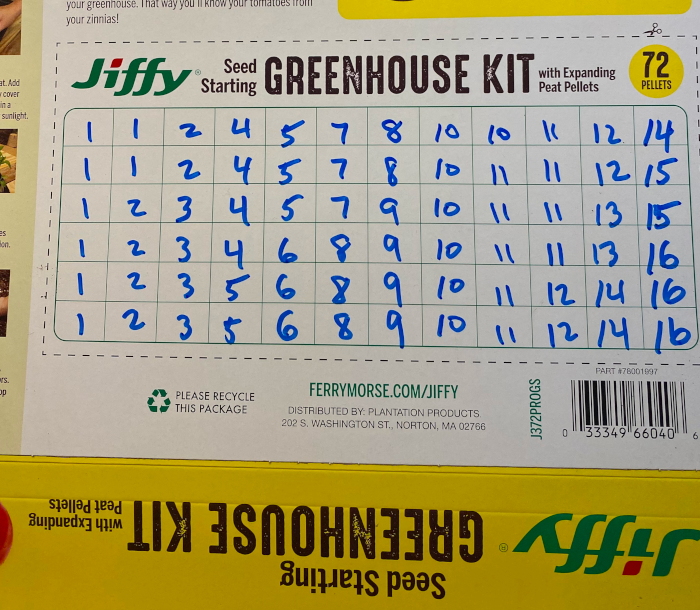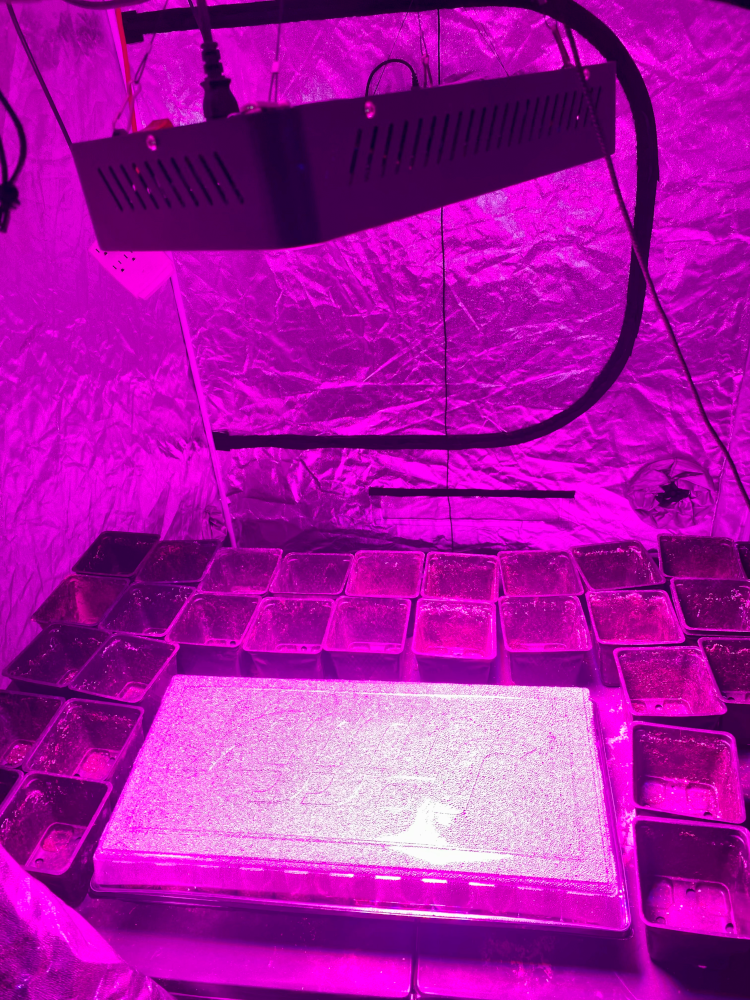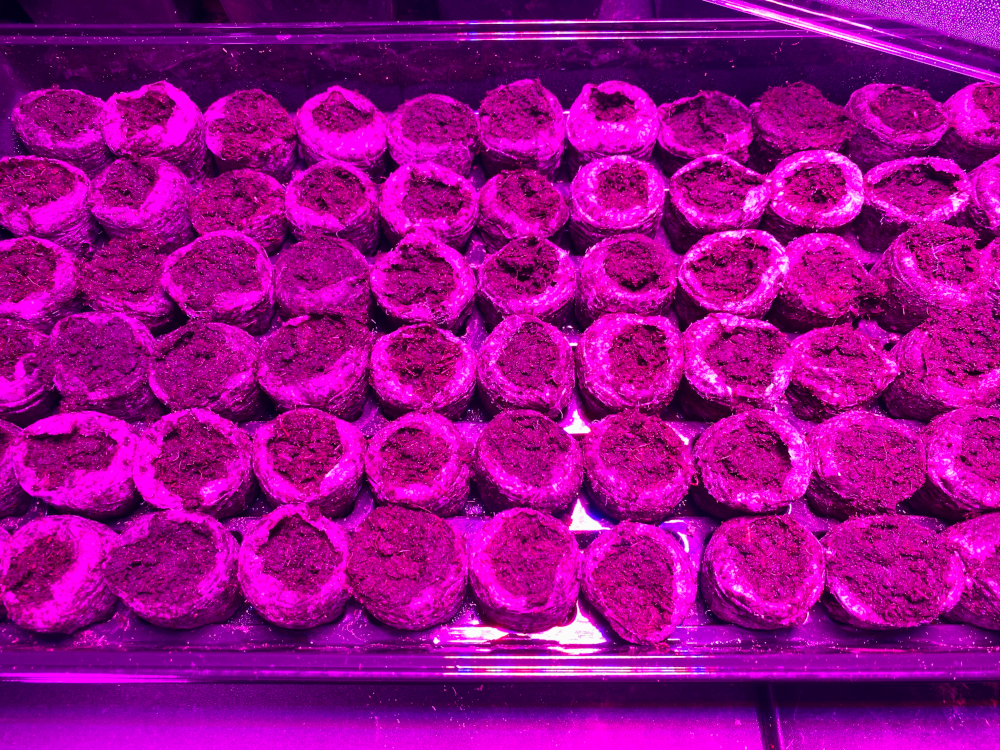It’s only early February here in Alaska’s beautiful Kenai Peninsula, but already the days are getting longer and the temperatures are moderating just a bit from the frigid lows in December and January. With the short growing season still four months ahead in June, it is already time for seed starting indoors. This is especially true for plants that take a relatively long time to grow and are not frost tolerant, yet are readily transplantable. This describes tomatoes, tomatillos, and peppers to a tee.
For starting seeds this early, I have chosen to initially work with a seed starting greenhouse kit made by Jiffy. It has 72 distinct peat pellets nestled within a water tight plastic tray, and includes a plastic dome for cover. With a total of twenty 8 foot by 4 foot raised beds (10 inside the greenhouse and 10 in the outside garden), we have room for roughly forty tomatoes & tomatillos, and maybe another dozen peppers, still leaving some room in the beds for other items like squash, cabbage, spinach, lettuce, etc. The cells were partitioned as follows:
- 8 Tomatillos (1)
- 6 Pink Brandywine Tomatoes (2)
- 4 Glacier Tomatoes (3)
- 4 Money Maker Tomatoes (4)
- 5 Sub Arctic Plenty Tomatoes (5)
- 3 Costoluto Florentine Tomatoes (6)
- 3 Pink Bumble Bee Tomatoes (7)
- 5 Marglobe Tomatoes (8)
- 4 Mortgage Lifter Tomatoes (9)
- 7 Jalapeño Peppers (10)
- 9 Habanero Peppers (11)
- 4 Jigsaw Peppers (12)
- 2 Ghost Peppers (13)
- 3 Goji Berries (14)
- 2 Huckleberries (15)
- 3 Gooseberries (16)
The inclusion of the berry plants is something I’ve always wanted to try: growing my own berry bushes from seed. Since they also take a long time to grow and there were a few extra cells to spare, this seemed like the perfect opportunity to give it a shot.

Another nice thing about this kit is the back has a printed guide where you can make a note of which seeds were placed in which cell. It can often be difficult to determine which plant is which, especially when many are different varieties of the same underlying species, such as tomatoes, so the guide comes in really handy here. Rather than write the full name into each square, just come up with a numbering system and make a key to let you know that 1 = tomatillo, 2 = brandywine tomato, 3 = glacier tomato, and so on. After completing the guide & your numbering key, it’s easy enough to take a picture of each with a cell phone, and then discard the original packaging.
Following the usual seed starting advice, at least two or three seeds went into each cell. Some of the seed such as the Mortgage Lifter tomatoes was quite old, bordering on almost ten years, so in cases like those where the germination rate could be expected to be much lower, up to four and even five seeds were placed per cell. As the seeds sprout it will be critical to pare down quickly to the strongest plant so that in the event multiples do germinate they will not compete with each other such that none can thrive.


The mini-greenhouse kit was placed in the Ohuhu Grow Tent under a 1kW Kingbo grow light. As time moves on and the season gets closer, other items such as squash, beans, cabbage, broccoli, cucumbers, spinach, etc. will be started in more standard pots and join these initial seeds inside the tent.
